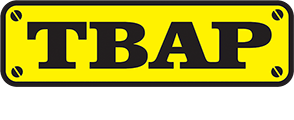Radiator Installation
Before installation please inspect for any damage that may occur during transit. If this is anything wrong please notify us immediately.
Please check the hoses clamps thermostat, etc and replace as needed.
Remember to flush the system. If the engine block is contaminated with rust and /or other debris, it will be transferred to the new radiator if the system isn’t flushed prior to installing the new unit.
Please do not mix any coolant brands together. Use only the coolant recommended for your vehicle. Green coolant is not compatible with orange or pink coolant. Follow the manufacturer’s recommendations for coolant type.
Please do not over-torque the oil cooler fittings.
Radiator Installation procedure:
- Take off the radiator cap when the engine is completely cool.
- Open the petcock to drain the coolant from the system.
- Flush the system. This will remove the dirt and other debris that has built up. Fill the system as well as you can with water, them warm up the engine and let it cool. Drain the radiator again and fill it once more with water. Repeat.
- Remove the upper and lower radiator hoses and the the hose to the reservoir, remove all electrical wiring harness connections and disconnect the transmission line. Be aware that the transmission fluid is toxic and should be appropriately disposed of.
- Disconnect the air conditioner condenser and remove the radiator from the car.
- Correctly install the new radiator assembly on the new radiator.
- Put new radiator into the car (connect the mounting brackets, secure the air condenser, plug in wiring harnesses, connect the transmission cooler lines, connect the upper and lower radiator hoses and the hose to the reservoir.)
- Only use the correct coolant specified on the owner’s manual.
- Dilute the coolant with distilled water when it is not a pre-diluted coolant.
- Pour to the fill line.
- Bleed the air from the cooling system by opening the bleeder valve if equipped, or by running the engine with the radiator cap off and starting your engine. Leave the car running until it reaches its normal operating temperature. This will help to push out the air that has been trapped in your car’s cooling system.
- Close your radiator cap.

